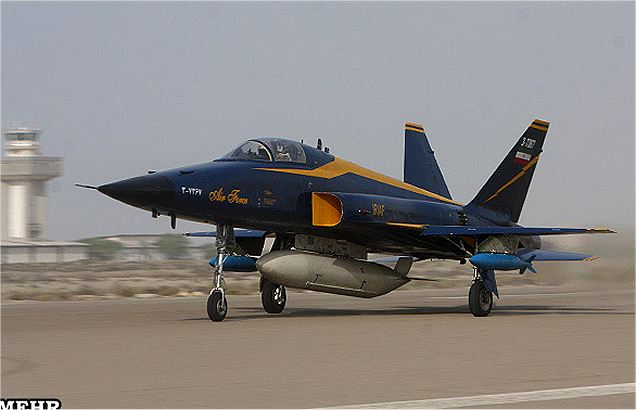Iranian Defense Minister Brigadier General Ahmad Vahidi
announced on Monday, February 20, 2012, that the country is upgrading
its warplanes and manufacturing new generations of fighter jets. Speaking
to reporters about the fourth generation of Iranian fighter jets, Vahidi
stated, "These planes are divided into the two categories of +1
and +2 depending on the upgrade works done on them."
|
"We intend to create better generations of our
fighters through upgrading them," the minister stated.
"As regards the areas of aerospace and missile technology, we are
seen among the world's major powers," he added.
In January, a senior Iranian Air Force commander announced that the
country's defense industries has started research for manufacturing
vertical climb aircraft with straight vertical flight.
"Studies are underway at the Defense Industries" for manufacturing
this type of aircraft," Lieutenant Commander of the Islamic Republic
of Iran Air Force (IRIAF) for Coordination Brigadier General Aziz Nasirzadeh
told reporters.
The Iranian Air Force tested its defense capabilities in massive air
drills, dubbed as 'Fadaeeyan-e Harim-e Vellayat III', in Iran's Northwestern
regions a few months ago.
During the exercises which started on September 6, the Iranian Air Force
fighter jets practiced electronic war operations and Iran's two well-known
home-made fighter jets, namely Saeqeh (Thunderbolt) and Azarakhsh (Lightening)
staged successful missions and bombed the specified targets under full
radio silence.
Saeqeh
and Azarakhsh were among the several squadrons of the Iranian Air Force
fighter jets which conducted night raids on fixed and mobile targets
under complete radio silence.
Different plane equipments, ammunitions and tactics went under test
in the four phases of the exercises codenamed 'Fadaeeyan-e Harim-e Vellayat
III'.
An array of fighter jets, fighter bombers, cargo and transportation
planes, including F-4, F-5, Sukhoi-24 (SU-24) fighter-bombers, Mig-29
and the logistic C-130 planes, were used in the exercises.
|



























